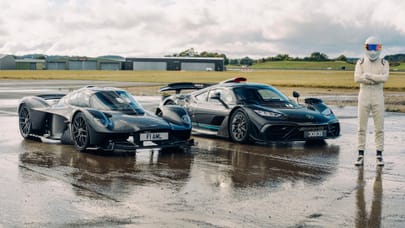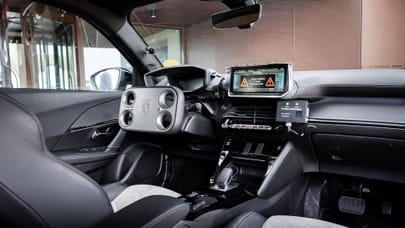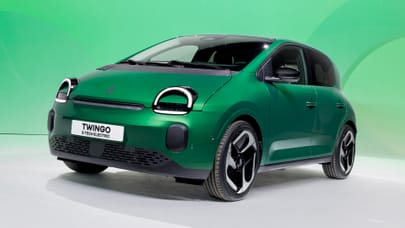
Report: the Shanghai Motor Show 2013
Shanghai unnerved me this year. Really, it did. I've visited Rio shanty towns, driven into rough-arsed Belfast council estates in the back of a police Land Rover, and taken a wrong turn into gangland LA. But Shanghai in 2013 trumped them all. For a place that's been anointed as ‘the future' by so many trend indexes and business soothsayers, there's a definite ‘end of the world' vibe. We landed in heavy fog, and though it lifted, Chicken Licken would still have felt right at home; even on a good day, it feels like the sky is falling in. And this without the rising paranoia about a new bird-flu pandemic...
Yet China remains a statistician's - and Western car executive's - dream. In excess of 200 cities here house more than one million inhabitants, while 10 cities contain more than 10 million people each. Then there's the Yangtze Delta region, an area the size of Germany that's home to an unbelievable 217 million people. Shanghai is the main hub of this delta, and is home to 23 million of them. Almost a quarter of China's humongous GDP is generated by this bit of the country - equivalent to $1800bn. This has helped fuel prosperity to the extent that there are now more than one million millionaires in China overall. Information like this is almost impossible to absorb.
So while Europe continues to flail about searching for the exit door to its financial apocalypse, and the new Governor of the Bank of England Mark Carney opened his account with yet more doom-mongering, the Chinese are jumpy because annual growth slipped to 7.5 per cent last year... That sort of figure would have George Osborne and IMF boss Christine Lagarde swinging from the rafters.
It also explains why the world's car makers are still so entranced by the place. Take BMW - known as ‘Bao-ma' or ‘precious horse' in Chinese. In 2012, it sold 326,444 cars (including Mini), a year-on-year increase of 40.4 per cent. Four models are now produced locally - including the obligatory long wheelbase versions of the 3 and 5 series - in two huge factories. Just last month, meanwhile, BMW announced a deepening of its relationship with its Chinese partner Brilliance; they're collaborating on a new electric vehicle brand, called Zinoro. It means ‘honouring promises'.
BMW also recently extended its DesignWorks off-shoot to Shanghai, opening a handsome five-storey facility in the French Concession, about as genuinely leafy a quarter of this concrete jungle as you'll find. Here's another figure for you: 90 per cent of innovation is software enabled or implemented, and Chinese universities are producing super skilled IT graduates like there's no tomorrow. We met a dozen of them in the Shanghai DesignWorks, most of whom are fast-tracking BMW's proprietary ‘connected drive' architecture.
‘Chinese customers treasure their relatedness,' we were told, and the country's young generation don't just view cars as desirable mobility tools, more than anywhere else on the planet they're effectively giant smartphones. Elsewhere, this new generation are known as ‘Millennials', and the rising cost of driving as well as an over-arching trend means that they'd rather have a smartphone than a car, if they had to choose. In China, they want both, blended together. China's Facebook is called Tencent, its microblogging Twitter service is known as Weibo, and its music streaming is done by a platform called QQ Music rather than Spotify. All of these are being seamlessly integrated into BMW's cabin architecture, the media convergence we hear so much about now happening on a component level as well as a software one. ‘People really do want cars in China,' Alexis Trolin, head of BMW's connected drive lab tells me, ‘but the car itself needs to stay really compelling to have a future.' Tellingly, China's vast social network gives its users a few hours' grace before the authorities get to ‘harmonise' its content. Could the seeds of another revolution rise from someone tweeting from their Mini?
This emergent Chinese automotive culture is as quirky as it is fast moving: ‘product layering' is the term BMW uses to describe the fact that a 7 series in China is just as likely to be bought by a 20 year old as it is a sixtysomething captain of industry. And, as we already know, Chinese consumers like a lot of space in their cars. ‘It's like a private courtyard to them,' Trolin says.
The Shanghai show itself offers dramatic proof of how fast this country is accelerating. I last visited in 2007, and filled my mobile phone with images of daft local product, a series of laugh-out-loud knock-offs. Not this time. Though most Chinese car makers still haven't got the hang of describing their cars in English - Chery's list of acronyms include HDS (Hydrodynamic surfacing), the 3R Body (Ring, Resist, Route) and SW (Smooth Way) - the cars themselves were often surprisingly good. ZX Auto's Urban Ark is clearly channelling the Kia Soul but didn't utterly offend me (with green paint and stripes, anyway), BYD's neat little E6 hybrid looked pretty good, and Haval's H2 cross-over was OK. I was slightly mesmerised by the £1m, six metre-long Hongqi L7; Hongqi means ‘Red Flag', the limo long favoured by Communist party officials who now prefer lwd Audi A6s. Personally, I'd have one of these. In fact, I'd like one over here, just for the hell of it. If I was rich and stupid.
There were lots of great concepts, too; Kia's Horki-1 saloon previews its new Chinese sub-brand, and Geely's KC looked promising, toothy grille apart. As it's the work of former Volvo and Ford design boss, our very own Peter Horbury, and uses the S80 platform, we probably shouldn't be too surprised. Then there was the Icona Vulcano, an F12/Corvette-aping two-seater supercar with a 950bhp hybrid 6.0-litre V12 powertrain developed by ex-Ferrari, ex-Lancia, ex-Aprilia engineering genius Claudio Lombardi. God knows if it'll ever see the light of the day, but its moment in the Shanghai sun was memorable enough, and more proof that this show is now a firmly Tier One world event.
As to where the Chinese will be in another five or six years, well I wouldn't bet on them being at least level with Europe's best, if not in the driving seat. Assuming, of course, that they get their colossal pollution problems under control, and the sky doesn't actually fall in.
Top Gear
Newsletter
Thank you for subscribing to our newsletter. Look out for your regular round-up of news, reviews and offers in your inbox.
Get all the latest news, reviews and exclusives, direct to your inbox.
Trending this week
- Car Review
BMW 1 Series








